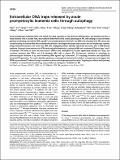| dc.contributor.author | Ma, R | en_US |
| dc.contributor.author | Li, T | en_US |
| dc.contributor.author | Cao, M | en_US |
| dc.contributor.author | Si, Y | en_US |
| dc.contributor.author | Wu, X | en_US |
| dc.contributor.author | Zhao, L | en_US |
| dc.contributor.author | Yao, Z | en_US |
| dc.contributor.author | Zhang, Y | en_US |
| dc.contributor.author | Fang, S | en_US |
| dc.contributor.author | Deng, R | en_US |
| dc.contributor.author | Novakovic, V A | en_US |
| dc.contributor.author | Bi, Y | en_US |
| dc.contributor.author | Kou, J | en_US |
| dc.contributor.author | Yu, B | en_US |
| dc.contributor.author | Yang, S | en_US |
| dc.contributor.author | Wang, J | en_US |
| dc.contributor.author | Zhou, J | en_US |
| dc.contributor.author | Shi, J | en_US |
| dc.date.accessioned | 2016-12-02T15:24:54Z | |
| dc.date.issued | 2016 | en_US |
| dc.identifier.citation | Ma, R., T. Li, M. Cao, Y. Si, X. Wu, L. Zhao, Z. Yao, et al. 2016. “Extracellular DNA traps released by acute promyelocytic leukemia cells through autophagy.” Cell Death & Disease 7 (6): e2283. doi:10.1038/cddis.2016.186. http://dx.doi.org/10.1038/cddis.2016.186. | en |
| dc.identifier.issn | 2041-4889 | en |
| dc.identifier.uri | http://nrs.harvard.edu/urn-3:HUL.InstRepos:29626103 | |
| dc.description.abstract | Acute promyelocytic leukemia (APL) cells exhibit disrupted regulation of cell death and differentiation, and therefore the fate of these leukemic cells is unclear. Here, we provide the first evidence that a small percentage of APL cells undergo a novel cell death pathway by releasing extracellular DNA traps (ETs) in untreated patients. Both APL and NB4 cells stimulated with APL serum had nuclear budding of vesicles filled with chromatin that leaked to the extracellular space when nuclear and cell membranes ruptured. Using immunofluorescence, we found that NB4 cells undergoing ETosis extruded lattice-like structures with a DNA–histone backbone. During all-trans retinoic acid (ATRA)-induced cell differentiation, a subset of NB4 cells underwent ETosis at days 1 and 3 of treatment. The levels of tumor necrosis factor-α (TNF-α) and interleukin-6 (IL-6) were significantly elevated at 3 days, and combined treatment with TNF-α and IL-6 stimulated NB4 cells to release ETs. Furthermore, inhibition of autophagy by pharmacological inhibitors or by small interfering RNA against Atg7 attenuated LC3 autophagy formation and significantly decreased ET generation. Our results identify a previously unrecognized mechanism for death in promyelocytes and suggest that ATRA may accelerate ET release through increased cytokines and autophagosome formation. Targeting this cellular death pathway in addition to conventional chemotherapy may provide new therapeutic modalities for APL. | en |
| dc.language.iso | en_US | en |
| dc.publisher | Nature Publishing Group | en |
| dc.relation.isversionof | doi:10.1038/cddis.2016.186 | en |
| dc.relation.hasversion | http://www.ncbi.nlm.nih.gov/pmc/articles/PMC5108337/pdf/ | en |
| dash.license | LAA | en_US |
| dc.title | Extracellular DNA traps released by acute promyelocytic leukemia cells through autophagy | en |
| dc.type | Journal Article | en_US |
| dc.description.version | Version of Record | en |
| dc.relation.journal | Cell Death & Disease | en |
| dc.date.available | 2016-12-02T15:24:54Z | |
| dc.identifier.doi | 10.1038/cddis.2016.186 | * |
| dash.authorsordered | false | |


